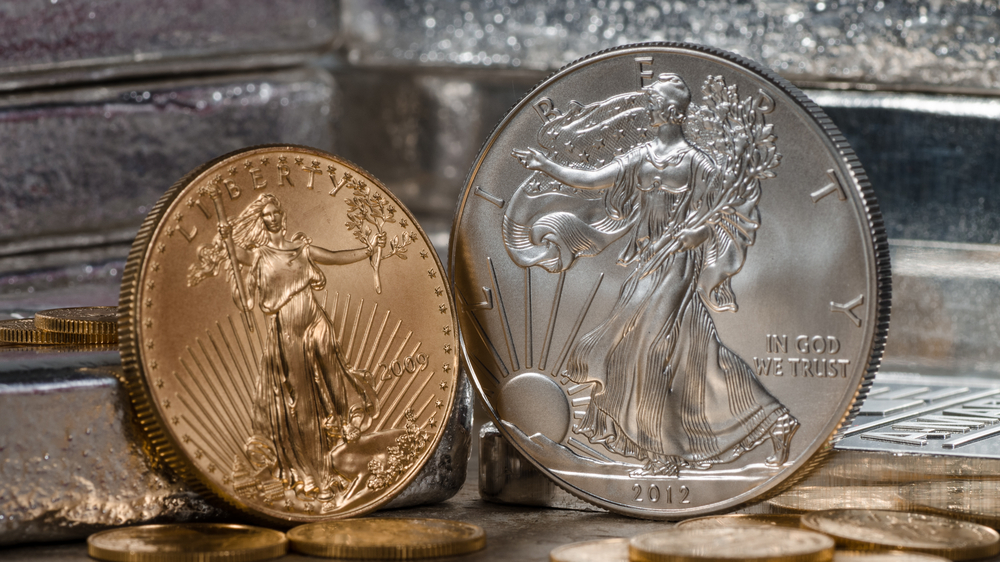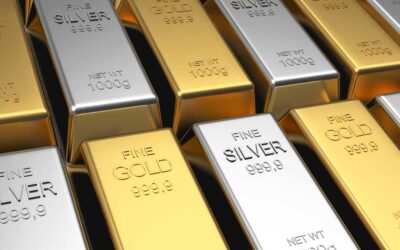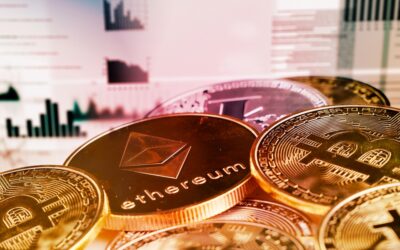Precious Metals as an Investment Avenue
Gold, silver, platinum, and other precious metals have been valued for their intrinsic worth and used as a medium of exchange for millennia. Today, they continue to play a significant role in the portfolios of savvy investors worldwide.
Investing in precious metals offers a variety of benefits. They serve as a store of value, particularly in times of economic uncertainty. When traditional financial systems falter, precious metals often retain their worth, providing a safety net for investors. They are tangible assets that cannot be erased by a financial crisis or digital failure, unlike stocks or digital currencies.
Furthermore, precious metals offer an excellent avenue for portfolio diversification. They often move independently of other asset classes such as stocks and bonds. This means that when the stock market is down, precious metals may perform well, thereby balancing the overall portfolio performance.
However, like all investment avenues, investing in precious metals also comes with its challenges. The prices of precious metals can be volatile, influenced by global economic conditions, supply and demand dynamics, and investor sentiment. They also do not generate passive income like dividends from stocks or rent from real estate. Therefore, the primary source of potential profit is capital appreciation.
It is also worth noting that investing in precious metals does not always mean buying physical bars or coins. There are various investment vehicles available, including exchange-traded funds (ETFs), mutual funds, futures contracts, and mining company stocks. Each comes with its own set of considerations, including storage and security, transaction costs, and ease of buying and selling.
Understanding Gold Investments
Gold, the most coveted of precious metals, has been a symbol of wealth and power throughout human history. Its lustrous appeal, rarity, and durability have made it a preferred choice for jewelry, coinage, and other decorative purposes. In addition, gold has established itself as a strategic financial asset.
Investing in gold offers several advantages. Gold is often viewed as a “safe haven” asset, meaning that investors flock to gold during times of economic uncertainty or instability. This is because gold typically retains its value, even when other investments like stocks or bonds are performing poorly. This makes gold an effective hedge against inflation and currency fluctuations.
Another key aspect of gold is its inverse relationship with the U.S. dollar. When the value of the dollar decreases against other currencies, the price of gold often rises. This relationship can be beneficial for investors looking to protect their wealth in times of dollar weakness.
However, investing in gold is not without its challenges. Unlike stocks or bonds, gold does not pay dividends or interest. The only return on investment comes from the appreciation of its price. This means that if the price of gold remains stagnant or decreases, investors may not see any return on their investment.
Additionally, the price of gold can be volatile in the short term, influenced by factors such as geopolitical events, market speculation, and changes in supply and demand. For instance, increased mining activity can lead to an oversupply of gold, potentially driving down prices.
Investors also need to consider the costs associated with buying, selling, and storing physical gold. These costs can eat into potential returns, especially for smaller investments. Alternatively, investors can opt for gold-related financial instruments like ETFs, mutual funds, or gold mining stocks, which offer exposure to gold prices without the need to physically own the metal.
Overall, gold can be a valuable asset for investors who are looking to diversify their portfolios and protect their wealth against inflation and currency fluctuations. However, it is important to be aware of the risks associated with gold investing before making an investment.
Understanding Silver Investments
While gold often takes center stage in discussions about precious metals, silver offers its own unique set of investment opportunities. Known for its brilliant luster and malleability, silver has been used for centuries in a variety of applications, from coinage and jewelry to photography and electronics.
One of the key advantages of investing in silver is its wide range of industrial applications. Silver’s superior conductivity makes it indispensable in the electronics industry, while its antimicrobial properties are utilized in the medical field. This industrial demand provides a steady base for silver prices.
Like gold, silver is also considered a safe haven asset. During periods of economic uncertainty or market volatility, investors often turn to silver as a store of value. However, it is important to note that silver can be more volatile than gold due to its smaller market, lower market liquidity, and demand fluctuations from its industrial sector.
Investing in silver also comes with its own set of challenges. The price of silver can be highly volatile, influenced by factors such as economic activity, technological advancements, and changes in supply and demand dynamics. For instance, a slowdown in the electronics industry could reduce demand for silver, potentially impacting its price.
As with gold, investing in physical silver involves costs related to buying, storing, and insuring the metal. These costs can be significant, especially for smaller investors. However, there are other ways to invest in silver without owning the physical metal. These include silver ETFs, mutual funds, futures contracts, and shares in silver mining companies.
Gold vs. Silver: A Comparative Analysis
When it comes to investing in precious metals, the choice between gold and silver is not straightforward. Each has its own unique characteristics, advantages, and challenges. Understanding these can help investors make informed decisions that align with their financial goals and risk tolerance.
One of the key differences between gold and silver is their market size. The gold market is significantly larger and more liquid than the silver market. This means that large trades can be executed in gold with minimal impact on its price, making it a more stable investment. On the other hand, the smaller silver market can experience larger price swings, offering the potential for higher returns but also greater risk.
Another difference lies in their industrial demand. Silver is widely used in various industries, from electronics to medicine. This industrial demand can provide a certain level of price support. However, it also means that silver prices can be more sensitive to economic cycles. Gold, on the other hand, has limited industrial use and its price is largely driven by investment and jewelry demand.
In terms of investment vehicles, both gold and silver offer a range of options. Investors can buy physical metal, invest in ETFs or mutual funds, trade futures contracts, or buy shares in mining companies. However, the costs and considerations associated with each can vary. For instance, physical ownership requires storage and insurance, while mining stocks expose investors to company-specific risks.
When comparing the price performance of gold and silver, it is important to consider the gold-to-silver ratio. This ratio indicates how many ounces of silver it takes to buy one ounce of gold. A high ratio suggests that silver is undervalued relative to gold, and vice versa. Investors often use this ratio as a timing indicator for when to buy or sell each metal.
Ultimately, the best investment for any individual will depend on their specific circumstances and goals. Investors should carefully consider all of the factors involved before making a decision.
Factors to Consider When Choosing Between Gold and Silver
The decision to invest in gold or silver is a complex one that depends on a variety of factors, including your investment objective, investment horizon, risk tolerance, and the costs associated with each type of investment.
If you are looking for a safe haven asset to protect your wealth during economic downturns, gold may be the better choice. Gold has a long history as a store of value and is less volatile than silver. However, gold also offers lower potential returns.
If you are seeking higher returns and are willing to accept more risk, silver may be a better choice. Silver is more volatile than gold and has the potential for greater price appreciation. However, silver is also a riskier investment.
The length of time you plan to hold your investment is another important factor to consider. If you are planning to hold your investment for a longer period, the short-term volatility of gold or silver may be less of a concern. However, if you are looking for a shorter-term investment, the volatility of these metals may be a deterrent.
It is also important to consider your risk tolerance before investing in gold or silver. Both metals are considered to be relatively safe investments, but they do come with some risks. These include price volatility, liquidity risk, and the risk of theft or loss for physical metals. It is important to assess your risk tolerance and ensure it aligns with your chosen investment.
Finally, you need to consider the costs associated with each type of investment. Buying physical gold or silver involves costs for storage and insurance. ETFs and mutual funds come with management fees. Mining stocks expose you to company-specific risks. Understanding these costs can help you choose the investment vehicle that offers the best potential return for your money.
Ultimately, the decision of whether to invest in gold or silver is a personal one. There is no right or wrong answer, and the best investment for you will depend on your individual circumstances
Investment Strategies for Gold and Silver
Investing in gold and silver can be a rewarding endeavor, but it requires a well-thought-out strategy. Whether you’re a seasoned investor or a beginner, understanding different investment strategies can help you navigate the precious metals market and make informed decisions.
Here are some of the most common investment strategies for gold and silver:
- Buy-and-hold: This is a long-term investment strategy in which investors buy gold or silver and hold it for an extended period of time. This strategy is based on the belief that the prices of gold and silver will rise over time, providing a return on investment. It’s a strategy that requires patience and a tolerance for short-term price fluctuations.
- Dollar-cost averaging: This is an investment strategy in which investors buy a fixed amount of gold or silver at regular intervals, regardless of the price. Over time, this can result in buying more metal when prices are low and less when prices are high, potentially lowering the average cost per ounce. Dollar-cost averaging can be a good strategy for those who want to invest in gold or silver but are concerned about timing the market.
- Futures trading: This is a strategy in which investors buy or sell futures contracts for gold or silver. Futures contracts are agreements to buy or sell a certain amount of a commodity at a set price on a future date. This strategy can offer higher potential returns, but it also comes with a higher risk, including the risk of losing more than your initial investment.
- Investing in gold and silver mining stocks: This is a strategy in which investors buy shares in companies that mine gold or silver. These stocks can offer leverage to gold and silver prices, meaning they can potentially provide higher returns when prices rise. However, they also come with risks, including company-specific risks and the risk of a decline in metal prices.
- Diversification: This is a strategy that many investors use to reduce risk. It involves spreading your investments across different asset classes, including gold and silver. The idea is that if one asset class declines in value, your other investments may offset the losses.
It’s important to note that these are just a few of the many investment strategies that can be used for gold and silver. The best strategy for you will depend on your individual circumstances and risk tolerance.




